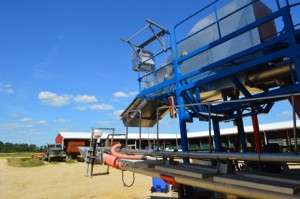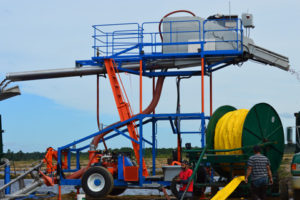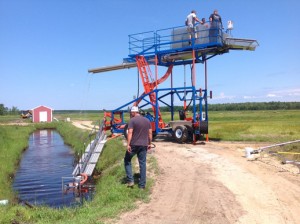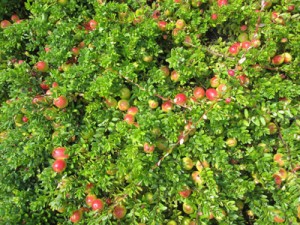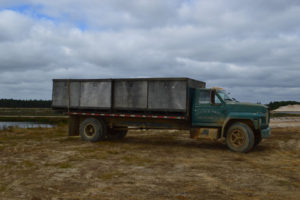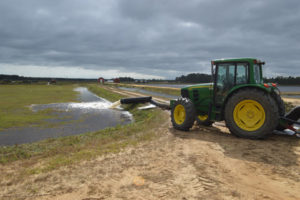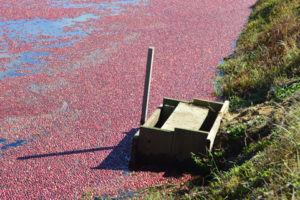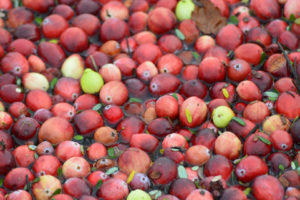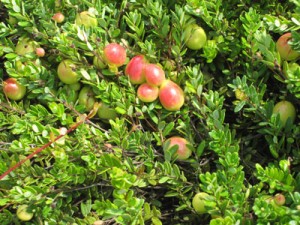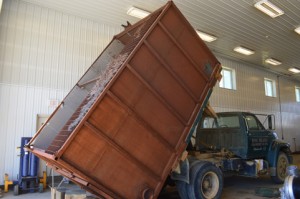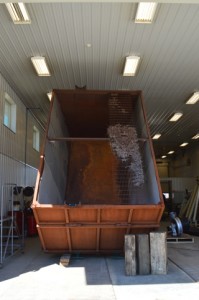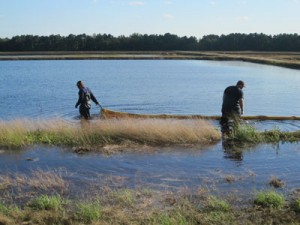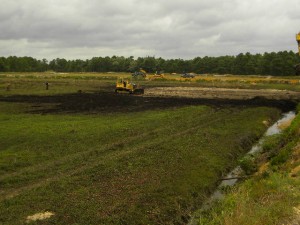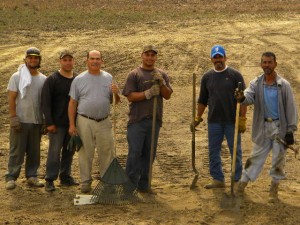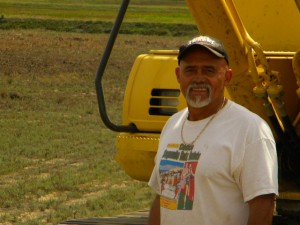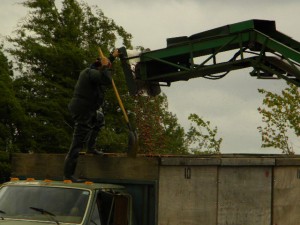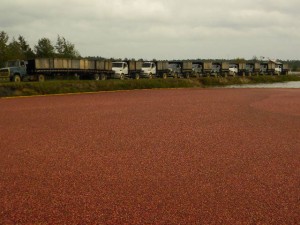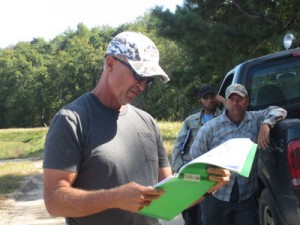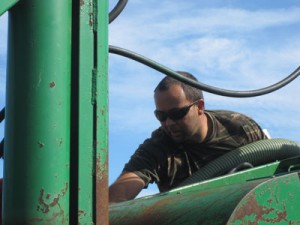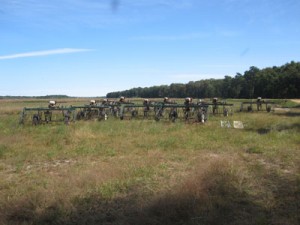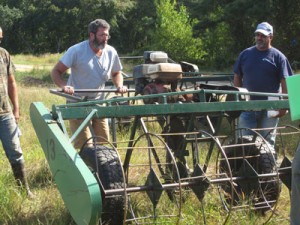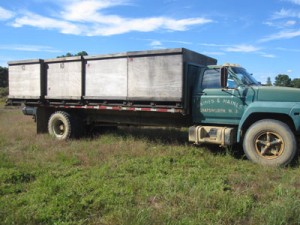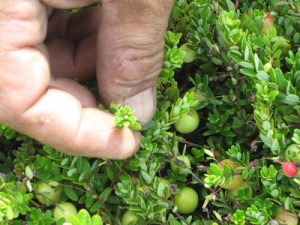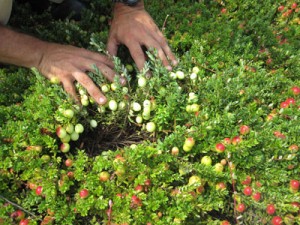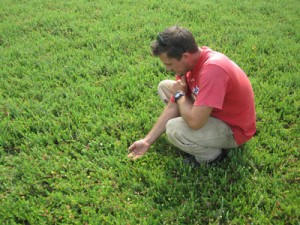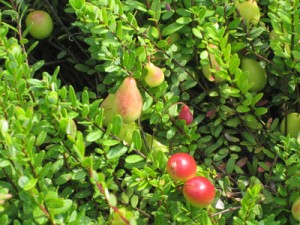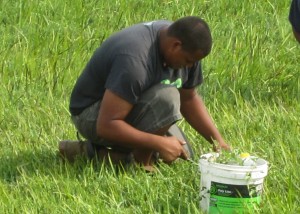September means harvest is getting closer every day, and our team is making sure everything gets done in plenty of time.
A few years ago, we began using bogside cleaners during the gathering process to help improve efficiency. Before that, during the harvest, berries were placed on a truck via an elevator. The truck then went to our packing house to unload and prep the berries for the receiving station by removing as much bog debris as possible. The bogside cleaner improved this process by removing the packing house step entirely and removing debris as the berries come out of the bog. This is better on fuel and easier on the team, as it requires fewer people in the water. As with any new equipment, there was a learning curve, but our team made modifications as they became necessary and took notes for subsequent harvests.
The experiment was successful and now we have four! “It was a long process,” says COO Bryan vonHahmann. “When we first started considering a berry pump, we went out to Wisconsin and looked at three or four makes of cleaners as well as looking at one owned by [our neighboring growers] the Lees. We ended up going with Paul’s Machine & Tool because they’d already done quite a bit to accommodate the user interface to make it more intuitive, and they were also very willing to customize it however we wanted.” The real test was during harvest itself, of course, and as expected, the team found that the machine would need some modifications based on practical use. (As Bryan says: “When we placed the order, we didn’t know what we didn’t know.”) One of the issues the team discovered was finding a lot of bog debris in the final product, as well as a diminished ability to remove the wastewater fast enough. “We wanted it to be as efficient as possible,” Bryan says, “so we made some minor changes during the season to remove vines and trash. But it became more labor intensive than it was worth.” So for subsequent orders, we asked Paul’s to make some design changes. The new berry pump added extra row of cleaning grates to the cleaning box and changed spacing on the box. At the same time, we sent the old cleaning box back and they sent us the 5 grate design in return. The combo of the new spray boom and an additional cleaning grate provides better quality fruit for the trailer to take directly to the Chatsworth receiving station.
The team is also looking at the fruit itself. In order to take advantage of the higher TAcy levels, they’re testing color to determine what beds we expect to pick first. Some varieties color earlier than others, and that is a factor we consider when planning our harvest strategy. Ocean Spray likes a consistent color, so we will take samples to the receiving station to check the TAcy number (an acronym for “total anthocyanin concentration” and is a unit of color measurement used in a cranberry) before harvesting. While the humidity gets worse in late summer, the nights tend to get cooler, and this actually improves the color.
Harvest time means being prepared for anything, and our team is well on its way.

